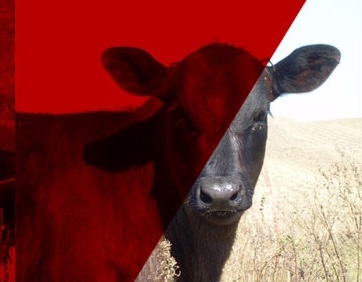Whether calves are being retained after weaning, or they are arriving by the truckloads, the weaned calf is at a critical juncture in development and currently is an expensive commodity whose health and growth should not be taken lightly.
The Connection between the Nursing Calf and the Weaned Calf
Although there is much to focus on during weaning, a successful weaning is impacted by the nursing phase. In an ideal situation, the calf was born to a healthy cow on a good nutrition and vaccination program who provided high quality colostrum to the calf at birth. In addition to receiving good nutrition as a nursing calf, the calf also received two rounds of vaccinations in a protocol developed by a local veterinarian. Much like in humans, a series of vaccinations while the calf is young can prevent viral outbreaks throughout its life. Viral diseases are hard to treat and if a calf survives them, that calf is seldom a thrifty calf with a great rate of gain. Antibiotics are effective on bacterial infections, not viruses. Therefore, the idea of a vaccination program is to minimize the impact of viruses in the herd so that when an illness does occur, the likelihood it is a treatable bacterial infection is high. Establishing a working relationship with a local veterinarian before weaning helps determine any booster vaccines that need to be given after weaning as well as developing an antibiotic use protocol before signs of an illness occur.
The Transition Away from Mom
By the time a nursing calf is five months old, that calf is eating over 1% of its body weight in forage on a dry matter basis. Once the calf is weaned, depending on the quality of the diet offered and the size of the calf, that calf will eat between 2.3% and 3.0% of its body weight in forage. So, the goal is to get that calf’s consumption from 1% up to 2.3% of its body weight in feed as quickly as possible.
The more familiar things can be, the smoother the transition. A similar diet to what they were eating with the cow is familiar to the calf and can encourage intake. A calf out grazing with the cow is going to prefer a grass hay or grazing situation and may not be willing to eat a silage-based diet immediately after weaning. However, a calf who consumed a silage-based diet with the cow, will eat that very well at weaning.
Rumen Development, Nutrition, and Water
Good nutrition is the key to good health for the weaned calf. By the time a calf is 150 days old, the rumen is fully developed but is small compared to a yearling calf or a cow. Therefore, the diet must be highly palatable and highly digestible. A diet of poor quality roughage will not have a high passage rate out of the rumen, making it unlikely the calf can eat enough to meet its nutrient requirements.
In addition to energy, the weaned calf needs metabolizable protein to meet both the needs of the microbes in the rumen and the needs for tissue growth such as muscle and skeleton. Feeds such as distillers grains will contribute more to skeletal and muscle growth than feeds like alfalfa hay or soybean meal due to the type of protein they supply.
The importance of a good vitamin and mineral package should not be overlooked as several vitamins and trace minerals such as Vitamin A, copper, and zinc play a crucial role in the functioning of the immune system.
Water is the most critical nutrient for life but is often overlooked for its importance in the weaning calf. Not only is water important in the prevention of dehydration and general metabolic function, but it is also important for digestion in the rumen. Therefore, a calf who cannot reach the water, cannot figure out the waterer, or will not drink the water due to contaminants, will also not eat.
Predator vs. Prey
One of the most frustrating things about caring for weaned calves is not realizing a calf has a need for medical attention. Because calves see humans as predators, they will often try to appear healthy when they sense they are being scrutinized. Sick calves will often hide in the middle of a group of calves to avoid drawing attention to themselves. Moving the calves around to see who exhibits depressed posture or labored breathing, who moves back to the bunk and continues to eat, and observing a calf from a moderate distance when the calf is unaware of being watched, can help determine which calves need to be pulled in for treatment.
Summary
Managing weaned calves, especially at today’s value, can be a little stressful. However, proper nutrition, vaccination schedules, treatment protocols, and vigilance can increase the success rate tremendously.
Those wanting assistance with ration balancing for weaned calves can reach out to the University of Nebraska beef focused educators and specialists.
Article by Karla Wilke, Nebraska Extension Cow-calf Stocker Management Specialist.

